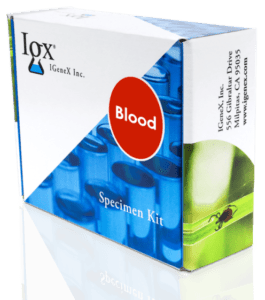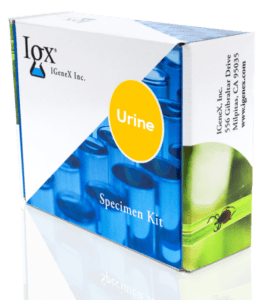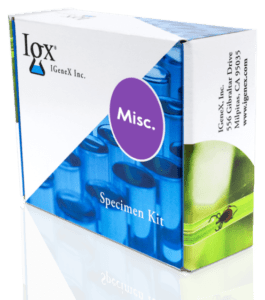If someone with a history of tick bites suffers from chronic symptoms commonly associated with Lyme disease, the likelihood that they are harboring Borrelia (the Lyme-causing bacteria) or other tick-borne microbes is high — even if the Lyme test is negative. Having a positive Lyme test, however, doesn’t necessarily guarantee successful treatment.
Getting to the bottom of the confusion starts with understanding the nature of the bacteria.
The Stealthy Nature of the Lyme Bacteria
Borrelia, the Lyme bacteria, is a master of persistence. The primary mechanisms it uses to persist in the body include invading cells and growing very slowly. Its goal is to establish a long-term presence in the body, not overwhelm the host with infection.
When coursing through the bloodstream immediately after a tick bite, the bacteria are exposed and vulnerable. That’s when antibiotics are most effective and the immune reaction is most intense. It’s also when the probability of a positive test is greatest.
They don’t stay in the bloodstream very long, however.
The bacteria rapidly disperse to tissues throughout the body (brain, heart, joints — everywhere). When they arrive, they invade cells. Invading cells provides them with protection from the immune system and antibiotics. If the invaded cells are healthy, the bacteria slow their growth rate, or even go dormant. That makes them very resistant to antibiotics and especially hard to detect.
Typically, it isn’t just Borrelia, either. This same mechanism of persistence — intracellular slow growth — has been documented for Bartonella, Babesia, and all the Lyme co-infections. Collectively, cells occupied with dormant or slow-growing microbes form a silent reservoir of dormant pathogens throughout the body that can reactivate and cause chronic symptoms at a later time.

A Silent Storm
All is quiet until cells harboring pathogens are weakened by stress. That may be a single stress factor, such as recovery from trauma or a new infection (such as COVID-19), but most of the time it’s multiple factors adding up over time, such as years of eating a poor diet, not getting adequate sleep, chronic exposure to toxic substances, and/or a sedentary lifestyle. Aging is also a factor that weakens cells.
When cells are weakened, pathogens emerge and invade other cells. Once unleashed, the microbes create a vicious cycle of cellular destruction that can be challenging to rein in. Because it is happening in tissues throughout the body, the resulting symptoms are diverse and widespread.
Though the chances of a positive test increase as microbe activity increases, the immune system’s reaction and the concentration of bacteria in the bloodstream are not as intense as during an acute infection. This means that getting a positive test for chronic Lyme is more challenging than for acute Lyme.
Why Antibiotics Often Fall Short for Chronic Lyme
Antibiotics kill all bacteria, but they are most effective for fast-growing aggressive bacterial pathogens. Even in their most active state, Borrelia and other Lyme-related microbes grow very slowly. This renders antibiotics less effective in general. (It shouldn’t be surprising that at least 20 percent of people treated with antibiotics for acute Lyme disease develop chronic symptoms later.)
In chronic Lyme disease, antibiotics kill active bacteria, but do not have a significant effect on the reservoir of slow-growing intracellular bacteria. As soon as the antibiotics are stopped, new pathogens emerge and the patient relapses. Practitioners try to compensate by using intense antibiotic therapy for prolonged periods, typically for six-month periods. This practice, however, is fraught with a list of issues.

Prolonged antibiotic use carries significant downsides:
- Disruption of normal flora: Antibiotics alter the gut and skin microbiome, weakening the body’s natural defenses.
- Antibiotic resistance: Overuse contributes to the global health crisis of resistant pathogens.
- Toxicity to cells and tissues: Antibiotics harm cells and mitochondria, and disrupt the protective mucus barrier in the colon.
- Limited scope: Antibiotics don’t cover viruses, protozoa, or other microbes that may be present.
In addition, it’s often not one pathogen, but a range of different types of pathogens emerging at the same time. As you might expect, clinical studies evaluating long-term antibiotic therapy show mixed results, with the risks generally outweighing any benefits.
Fortunately, there is a better choice.
Why Herbal Therapy Is Different
Herbs offer a sophisticated, holistic approach. Plants defend themselves against microbes using phytochemicals, which function like an immune system. These compounds selectively target a broad spectrum of pathogenic bacteria, viruses, fungi, and parasites without harming beneficial flora.
This gives herbs several distinct advantages:
- Support, rather than suppress normal flora: Suppress pathogens without disrupting the balance of normal flora in the gut and on the skin.
- No resistance: Formation of antimicrobial-resistant super pathogens is not known to occur with the use of herbs.
- Cell protection: Herbal compounds neutralize free radicals, toxins, and other stressors, protecting the body at a cellular level.
- Broad-spectrum action: Herbs like Japanese knotweed and Cryptolepis provide coverage against a wide range of pathogenic bacteria, viruses, protozoa, and yeast.
- Low potential for toxicity: Most herbs used for Lyme therapy are well-tolerated, allowing continuous treatment until symptoms resolve.

A Proven Solution
Scientific studies support the efficacy of herbal therapies for Lyme disease. A 2020 study at Johns Hopkins University evaluated a dozen herbs for antimicrobial activity against Borrelia burgdorferi. Of the 12, seven herbal extracts were found to have greater activity against both motile and cyst (dormant) forms of the bacteria than commonly used antibiotics.
The list included:
- Cryptolepis sanguinolenta
- Juglans nigra (Black walnut)
- Polygonum cuspidatum (Japanese knotweed)
- Artemisia annua (Sweet wormwood)
- Uncaria tomentosa (Cat’s claw)
- Cistus incanus
- Scutellaria baicalensis (Chinese skullcap)
Similar studies showed that some of these herbs also inhibit Babesia, Bartonella, and other pathogens, including viruses, such as Epstein-Barr and SARS-CoV-2.
The Hidden Value of Microbe Testing
While the broad-spectrum properties of herbs help compensate for the limitations of testing in chronic Lyme disease, testing does still have value. As much as anything else, a positive test provides verification. It’s almost like a passport. Without it, you’re not treated the same way by healthcare providers as if you did have it. Microbe testing can also be valuable if you’re not responding to a particular combination of herbal therapy. Lastly, testing expands our collective knowledge. The more we test, the more we know, and the better the testing becomes.
Don’t let a negative test stop you from initiating therapy, however. Due to the fact that herbal therapy provides broad-spectrum coverage with low potential for toxicity, therapy can be initiated safely, even without a positive test. By combining antimicrobial properties with cellular protection and immune support, herbal therapy offers hope and healing to those battling this challenging condition.
If you or your patients are ready to explore a natural path forward, consider the power of herbal therapy as a cornerstone of your journey to wellness.
Learn more about Dr. Rawls’ approach to treating chronic illness with herbal therapy at RawlsMD. For further information on Lyme disease testing check out IGeneX tests today.
References
An X, Bao Q, Di S, et al. The interaction between the gut Microbiota and herbal medicines. Biomed Pharmacother. 2019;118:109252.
Bloch EM, Kumar S, Krause PJ. Persistence of Babesia microti Infection in Humans. Pathogens. 2019;8(3):102.
Embers ME et al. Variable manifestations, diverse seroreactivity and post-treatment persistence in non-human primates exposed to Borrelia burgdorferi by tick feeding. PLoS One. 2017 Dec 13;12(12):e0189071.
Feng J et al. Evaluation of Natural and Botanical Medicines for Activity Against Growing and Non-growing Forms of B. burgdorferi. Front Med (Lausanne). 2020 Feb 21;7:6.
Goc A, Niedzwiecki A, Rath M. In vitro evaluation of antibacterial activity of phytochemicals and micronutrients against Borrelia burgdorferi and Borrelia garinii. J Appl Microbiol. 2015;119(6):1561-1572.
Goc A, Rath M. The anti-borreliae efficacy of phytochemicals and micronutrients: an update. Ther Adv Infect Dis. 2016;3(3-4):75-82.
Hyde JA. Borrelia burgdorferi Keeps Moving and Carries on: A Review of Borrelial Dissemination and Invasion. Front Immunol. 2017;8:114.
Ma X, Leone J, Schweig S, Zhang Y. Botanical Medicines with Activity against Stationary Phase Bartonella henselae. Cold Spring Harbor Laboratory.
Meriläinen L, Brander H, Herranen A, Schwarzbach A, Gilbert L. Pleomorphic forms of Borrelia burgdorferi induce distinct immune responses. Microbes Infect. 2016;18(7-8):484-495.
Middelveen MJ et al. Persistent Borrelia Infection in Patients with Ongoing Symptoms of Lyme Disease. Healthcare (Basel). 2018 Apr 14;6(2). pii: E33.
Miklossy J, Kasas S, Zurn AD, McCall S, Yu S, McGeer PL. Persisting atypical and cystic forms of Borrelia burgdorferi and local inflammation in Lyme neuroborreliosis. J Neuroinflammation. 2008;5:40.
Petnicki-Ocwieja T, Kern A. Mechanisms of Borrelia burgdorferi internalization and intracellular innate immune signaling. Front Cell Infect Microbiol. 2014;4:175.
Wu J, Weening EH, Faske JB, Höök M, Skare JT. Invasion of eukaryotic cells by Borrelia burgdorferi requires β(1) integrins and Src kinase activity. Infect Immun. 2011;79(3):1338-1348.
Zhang Y, Alvarez-Manzo H, Leone J, Schweig S, Zhang Y. Botanical Medicines Cryptolepis sanguinolenta, Artemisia annua, Scutellaria baicalensis, Polygonum cuspidatum, and Alchornea cordifolia Demonstrate Inhibitory Activity Against Babesia duncani. Front Cell Infect Microbiol. 2021;11:624745.








